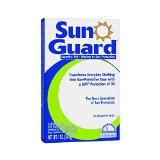I have a skin condition called disseminated superficial actinic porokeratosis (DSAP) which is brought out by the sun, so during the summer I try my best to slather on the sunscreen . But I naively believed that during winter I didn’t really need to protect my skin. I know the skin care professionals say you should wear sunscreen no matter the season, but I really didn’t believe them, until I read an article by Dr. Cynthia Bailey, a dermatologist in California.
To paraphrase Dr. Bailey: the UVB rays that cause sunburn are indeed less intense in the winter but UVA rays are out in in full intensity all day long, all year long, no matter the season or time of day. This means January or July, morning or afternoon, you’re getting the same amount of UVA. And it’s the UVA that penetrates skin at a deeper level (deeper than UVB) causing skin damage and wrinkles.
And, you probably didn’t know this: the SPF value on your sunscreen tells you about UVB protection, not UVA. So you’re skin is left vulnerable!
The moral of this story according to Dr. Bailey: Don’t slack off on your sun protection just because the sunburn ray is less intense and the sun feels less damaging. You need to take UVA seriously, which means you need really good protection from UVA.
What advice does Dr. Bailey give?
1. Keep the sun off your skin with sun protective clothing and a hat. This is definitely is easier than reapplying sunscreen every couple of hours and is the only sure fire method of keeping sun off your skin. Be sure to wear clothing with a UPF 50 rating (UPF is to clothes what SPF is to sunscreen). Check out my article on Sun Protective clothing that gives you a comprehensive list of all of the brands available. Here are a couple of my favorites:
2. Wash it out! Another really cool ninja trick for those of us who must keep the sun off our skin lest we look like we have the measles, is to wash clothes in a special detergent that actually makes your clothes more sun protective: According to the company, when you wash SunGuard into a garment it’s new sun protection power will last on average for 19 washes.
3. SLATHER IT ON! We can’t cover ALL of our skin. There’s your face, neck, hands, ears and possibly feet if we’re wearing flip flops (I have the worst DSAP spot right on my foot probably because I wear sandals all year long). Winter sunscreen should block UVA (Remember, the SPF tells you only about UVB protection, not about UVA protection). According to Dr. Bailey, to protect from UVA you need to use a product with 5% or more micronized zinc oxide. Be sure to verify that the zinc is listed at 5% or greater. She recommends these products that have broad spectrum UVA/UVB protection:
I personally love this product and have had excellent results with it. I use the tinted version.
4. Antioxidants! Are you using concentrated antioxidants in your skin care routine? The best are the green tea polyphenols, vitamin C and E but beware, not all products are created equally! Dr. Bailey says with the right products, her patients get fewer precancerous lesions. She trusts these super potent skin care powerhouses:
1. Replenix CF Cream to deliver potent antioxidants
2. Green Tea Antioxidant Skin Therapy – Replenix Power of Three Cream
3. Vitamin C Professional Cell Repair Serum which is a high-concentration liposome encapsulated stable L-ascorbic acid vitamin C combined with the peptide growth factor TGF-beta-1.
Myths & Rumors Dr. Bailey urges not to listen to people who tell you to get sun to prevent a vitamin D deficiency. Guess what? UVA doesn’t make vitamin D in your skin!
So whether you have disseminated superficial actinic porokeratosis (DSAP), or one of the many other skin conditions that require protection from the sun like Solar urticaria, Psoriasis, Darier’s disease, Chronic actinic dermatitis, lupus, connective tissue disease or Actinic folliculitis, you can benefit from protecting yourself from UVA rays that are equally as strong in the winter as they are in the summer.
What about you? What products do you use or recommend for Fall/Winter skin care?




I didn’t know that about UVA! No wonder why my DSAP spots look just as bad in the winter. I’m so going to buy some of that zinc oxide!
i have had dsap for 10 years and 6 years ago i had both of my knees replaced since then i have had no lesions grow in that 9 inch by 5 inch region of my knee where the scar is so i think the dsap problem is deep inside the body and this may help to get a cure by the medical profession around the world i do believe there is a connection regards kevin french.
I am 68 and have had DSAP since my 20s. In my late 20s I was in a motorcycle accident in which the exhaust pipe burned a long area of my leg. I was wearing a helmet, but had on shorts! To this day that burned area has never had a DSAP lesion. But, I’ ve had over 2000 frozen off my arms, legs, chest and back. Not saying I want any more 1st degree burns, but that patch looks beautiful now.
Very interesting that DSAP spots never appeared on the burn area!